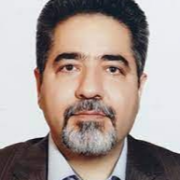Keywords
1. Context
During the forty-first session of the Regional Committee for the Eastern Mediterranean Region, EMR held in 1997, the Regional Committee passed a resolution to eliminate measles by the year 2010 (resolution number: EM/RC44/R.6). The goal then deferred to 2015 and 2020 (1). To reach this goal, in 1999, Iran developed a 5-year-plan based on WHO-UNICEF joint strategy for measles elimination, which consisted of 3 main strategies: (1) Achieve and maintain ≥ 95% vaccination coverage of children with the first and second dose of measles-containing vaccine (MCV1 and MCV2) in every district through routine immunization service; (2) Conduct a national catch-up campaign for at-risk group with > 95% coverage; and (3) Establish case-based surveillance with investigation and laboratory testing of all suspected cases.
2. Routine Immunization Coverage
Although immunization has had a long history in Iran since 1820, Expanded Program on Immunization (EPI) began to cover all children and other target groups in 1984. The measles vaccine was included in the immunization schedule in 1967 as one dose at the age of 9 months. In EPI, 2 doses of measles vaccine were used in 9 and 15 months; then changed to MMR vaccine in 12 months and 6 years old in 2004. The coverage of first and second dose MMR has been steady > 95% since 1993. In spite of high immunization coverage and good quality of EPI, there is still immunity gap, in particular, in non-Iranian who live in Iran (2).
3. Supplementary Immunization Activities, SIAs
In compliance with a regional commitment for measles elimination till 2015, Iran conducted the largest catch-up campaign in the world by the use of one injectable vaccine. Based on the recommendation of National Immunization Technical Advisory Group, the elimination of rubella till 2015 was also approved. Thus the country used Measles-Rubella, MR vaccine to vaccinate more than 33 million people aged 5 - 25 years old on December 2003 (3). An independent sero-survey study has been done to evaluate the quality and performance of the campaign. The results of the post-campaign sero-survey showed that anti-measles and anti-rubella antibodies were positive in 97.4% and 94.6% of individuals, respectively (4).
Another SIA, named keep-up campaign, was conducted in 2015 in the southeastern part of the country. The target age group was defined 9 months to 15 years old subjects based on the epidemiology of measles and rubella. Near to 1,820,000 children were vaccinated by MR vaccine in this SIA. The coverage of the campaign and also sero-prevalence of antibody against measles and rubella in the target group were evaluated by two separate surveys. Consequently, 98.7% of children were vaccinated during the SIA campaign and 98.4% of target age group were seropositive (5, 6).
4. Measles and Rubella Surveillance
A robust surveillance system for measles and rubella should be established to provide supportive and convincing information on the elimination of measles and rubella from each country. Since 2010, the standard definition of suspected measles case has been replaced by fever and maculopapular rashes. The number of suspected measles cases was increased steadily between 2008 and 2018 from about 1000 cases to 6800, respectively. Reported rates of non-measles and non-rubella suspected case has been more than 2/100,000 since 2010 and reached to more than 7/100,000 in 2018. The incidence rate of confirmed measles cases (clinically + epidemiologic + laboratory) was about 0.85 to 2 per million. The incidence of rubella has been less than one per million population since 2010.
Based on epidemiological data, including molecular epidemiology of isolated measles viruses, the circulation of endemic measles virus (D4) has been interrupted since 2013. Afterward, no new imported measles virus strain has had continuous circulation for 12 months. Documentation of achieving the goal of measles elimination to justify to international organizations, including the WHO, was a priority for public health authorities so that Effective Reproduction Number (R) was calculated for 2012 - 2014. The R-value in 2012 was 0.87 and the corresponding value for 2014 was 0.76, which support the elimination of measles in the country (7).
At the moment, Iran is very close to certify as a country eliminated measles and rubella in EMR. However, the experience of measles resurgence in the region of the Americas that certified as measles-eliminated earlier shows that maintaining elimination situation needs to save the highest immunity level of the community and well performance surveillance system for rapid detection and response to any imported case (8).
References
-
1.
World Health Organization. Progress towards measles elimination in the Region. 2017. Available from: http://www.emro.who.int/vpi/vpi-news/progress-towards-measles-elimination-in-the-region.html.
-
2.
Zahraei SM, Eshrati B, Gouya MM, Mohammadbeigi A, Kamran A. Is there still an immunity gap in high-level national immunization coverage, Iran? Arch Iran Med. 2014;17(10):698-701. [PubMed ID: 25305770].
-
3.
Zahraei SM, Gouya MM, Azad TM, Soltanshahi R, Sabouri A, Naouri B, et al. Successful control and impending elimination of measles in the Islamic Republic of Iran. J Infect Dis. 2011;204 Suppl 1:S305-11. [PubMed ID: 21666178]. https://doi.org/10.1093/infdis/jir076.
-
4.
Esteghamati A, Gouya MM, Zahraei SM, Dadras MN, Rashidi A, Mahoney F. Progress in measles and rubella elimination in Iran. Pediatr Infect Dis J. 2007;26(12):1137-41. [PubMed ID: 18043452]. https://doi.org/10.1097/INF.0b013e3181462090.
-
5.
Zahraei SM, Gouya MM, Mohammadi M, Tabatabaei SM, Zanganeh M, Zareban I, et al. A survey on measles and rubella supplementary immunization activities (SIAs) in Iran. Health Scope. 2017;In Press(In Press). https://doi.org/10.5812/jhealthscope.64184.
-
6.
Izadi S, Zahraei SM, Mokhtari-Azad T. Seroprevalence of antibodies to measles and rubella eight months after a vaccination campaign in the southeast of Iran. Hum Vaccin Immunother. 2018;14(6):1412-6. [PubMed ID: 29420120]. [PubMed Central ID: PMC6037465]. https://doi.org/10.1080/21645515.2018.1436920.
-
7.
Karami M, Zahraei SM, Sabouri A, Soltanshahi R, Biderafsh A, Piri N, et al. Documentation of measles elimination in Iran: Evidences from 2012 to 2014. J Res Health Sci. 2017;17(3). e00387. [PubMed ID: 28878113].
-
8.
Pan American Health Organization. Epidemiological update report. Pan American Health Organization; 2019.

